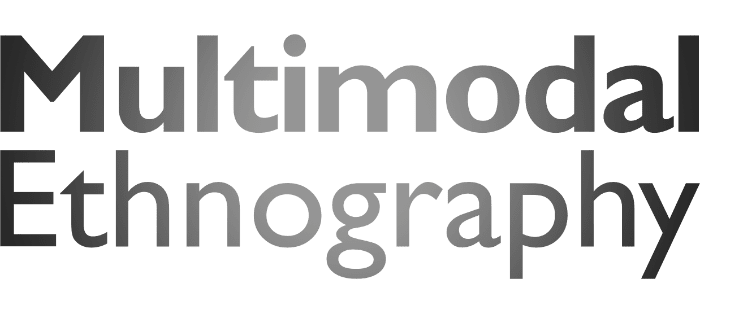Throughout the Organizing, Editing, & Analysis field shool you will have daily edit assignments due that aims to select important sequences from your mass of footage. After an initial assemblage assignment, you will present 2 sequences (~5m with minimal editing) each of descriptive, expository, and conceptual focus.
All assignments must be accompanied by a brief written reflection (200-300 words max) that provides a ‘metacommentary’ about the student’s intentions with the assignment’s selection and shared on Pitch2Peer. Rather than a description of the scene or how it was shot, this should describe the aims and purpose of the selection and thus aim to answer these questions:
- What are you trying to achieve with this selection?
- What are the basic ideas and concepts that motivate the selection?
- What do you want the viewer to learn or come away with after viewing your selection?
- How do the formal qualities (methods, techniques, style, etc.) support the content?
- How does it function within the larger project and to what other events, people, and concepts does it relate?
Ideally, this process facilitates critical distance from the work, which will help remedy a possessive tendency that makes it difficult to eliminate the student’s ‘darlings’. Ultimately, these written reflections should reflect on the modalities and practices of visual ethnography as an approach to knowledge production. As such, each reflection is an opportunity to critically engage with the image/text dynamic, and thus the relationship between the visual and written portions of the master’s thesis.
Using the Media Loglist that you’ve been maintaining while in the field, you should have made an initial 10-hour pre-selection of the materials you think are most significant for your project but also provide a good sense of the variety of content. The next step is to select up to 60 minutes of footage from this 10 hours of your most relevant footage that you will share in your Supervisory Groups to demonstrate what you think your research has been about. This should NOT be edited but only a rough assemblage of ‘raw’ chunks.
Some of you have already been editing materials for your field reports. You may include these in your assemblage, but in general at this initial point of analysis we find it premature to have already modified your materials like this. Over the next two weeks, we will ask you to share sequences of minimally edited footage that adheres as much as possible to the way it was recorded (i.e., without changes in chronology). At the end of this workshop, we will then shift to a process of making more assertive edited scenes. For a reminder of the distinctions between sequences and scenes, please refer back to the Thinking with a Camera assignment.
Given the length of the video and our need to share this virtually, you will most likely need to compress the file more than usual. If you have bandwidth issues, try exporting 10m chunks individually. Please don’t use this preset for any of the other assignments. Generally, simply choose a preset that has a resolution of HD1080P and a target bitrate of 2 to 2.5 Mpbs. In Adobe Premiere specifically, you can use the following preset:
- Select File —> Export —> Media…
- Click on ‘Format’ and scroll down to ‘H.264’
- Click on ‘Preset’ and select ‘Twitter 1080P Full HD’
Also, note that due to the length of the first assignment, we are splitting our supervisory groups into two presentation groups run on Tuesday 24 March and Wednesday 25 March. The distribution of students over these two sessions will be decided within your Supervisory Groups. Whereas presentation group 1 will need to submit their assignment by 23:59 on 23 March, presentation group 2 will submit their assignment by 23:59 on 24 March. Student should watch their peers’ assignments in the morning before class and prepare feedback.
During the meeting there will be discussion of and feedback on your footage by your supervisor and the other students in your group. We will discuss any issues that you may have encountered when sorting out your material and with starting the editing of the sequences.
Loosely assembled sequences (barely edited chronological series of shots that maintain the space and time experience with respect to the profilmic reality) of descriptive footage that you see as representing the essence of your research findings. You may include two key descriptive sequences (depicting significant events, characteristic activities, important interactions, etc.) or one key sequence and one relational sequence (adds context, nuance, or further familiarity with particular subject, plot, issue). No interview or extensive dialogue permitted.
Loosely assembled sequences (barely edited chronological series of shots that maintain the space and time experience with respect to the profilmic reality) of expository footage (interview or dialogue-driven) that you see as representing the essence of your research findings. You may include two key expository sequences (depicting the telling of significant stories, oral histories and biographies, public speeches, in/formal interviews, important verbal interactions, etc.) or one key sequence and one relational sequence (adds context, nuance, or further familiarity with particular subject, plot, issue).
Select footage with key sections of spoken language and transcribe at least 1 hour of footage in in detail. From this transcript, students can generate a list of key concepts, excerpts to quote in text, and subtitles in film. Your selection should correspond to sequences likely to be in the film and include the expository sequences submitted for EA3a.
Loosely assembled sequences (barely edited chronological series of shots that maintain the space and time experience with respect to the profilmic reality) of key conceptual footage that you see as representing the essence of your research findings. Include two key conceptual sequences (highlighting, symbolizing, or hinting at core themes, ideas, arguments, methodologies, etc.). Only one sequence may be driven by expository modes (interview, dialogue, etc.)
Students should prepare one edited scene of about 5 minutes composed of a group of shots unified in space and time or in some other way with respect to the structure of the film being made. Students may revisit footage used in previous sequence assignments and/or new footage.
This assignment is an ongoing task. You may share it with your supervisor for feedback during the one-on-one appointment. A final version should be included as an appendix in your written thesis.
The task is to create an overview of both your fieldnotes and all the footage that you produced in the field. This should be relatively easy if you continually organized these materials in the field. To reiterate, we asked you to develop a footage organization system that included the quantitative metadata of all relevant media records (name, date and time created, clip length) and a qualitative log of each clip with details about the content, names of key subjects, locations, events, topics, etc.
You should have also done something similar for your field notes with both a table of contents (date and title of entry) and an index that identifies the concepts, topics, people, locations, and events with reference to entry date. Hopefully, you were writing up notes on a daily basis with a combination of a) details that you will want to remember, b) ethnographic vignettes where you write in great detail about events or observations like you are telling a story and the people in your research are the main characters, and c) more speculative reflections about your research that tries to develop connections to the theoretical concepts. As such, it will be very important to be able to get an overview of these thoughts and a system about how to access the details therein.
- Fieldnotes table of contents: Create a cover page that provides a brief summary of your fieldnotes by date, include basic details about topics, subjects, and approximate entry length.
- Fieldnotes Index: If this is a big task, begin by selecting a 3-week period of your research and create an index of terms and concepts cross-referenced to dated entries. For example, if your topic was about homelessness, terms like shelter, food, police, violence, etc. may all be recurring topics.
- Footage Log: Provide a summary log of your organized footage, including a spreadsheet showing quantitative metadata of all relevant media records, including (new) name, date and time created, clip length. Provide a timeline graphic of your total footage, indicating when you produced your materials.
Footage Index: Create an additional qualitative log of each clip in your initial selection, with details about the content, names of key subjects, locations, events, topics, etc. From this data, generate a summary index of all the terms used cross-referenced to clip name. Complete at least 5 hours. Continue to work on this until complete.

